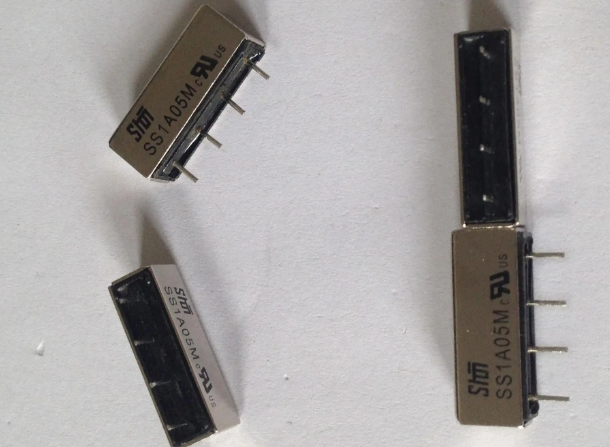Reed relays, like electromechanical hybrid relays, have physical contacts that are mechanically actuated, however in reed relays the contacts are much smaller in size. A reed relay consists of a coil surrounding a reed switch . The reed switch consists of two overlapping magnetic blades (called reeds) sealed in a glass capsule filled with an inert gas.
The two reeds have contacts where they overlap, and when a current flows through the coil, the two reeds are pulled together and their contacts form a complete circuit. When the current to the coil is removed, the spring force separates the reeds again.
Due to the smaller contacts and different actuation methods, reed relays can operate at about ten times the switching frequency of comparable electromechanical hybrid relays. The mechanical life of the reed relay is much longer than that of the electromechanical composite relay.

HE Series High Voltage Reed Relays
But its disadvantage is that due to the small size of the contact, the contact is easily damaged by the arc when the circuit is closed: when the arc crosses the contact, it may melt part of the surface of the contact, and if the melted part hardens again, the contact Before the points are separated, the two contacts will be welded together; and the spring force of the magnetic spring itself is often not enough to break this welded state, so the relay loses its function. Electromechanical relays can also be affected by arcing, but a higher energy arc is required to be damaged.
Also, since the contacts of a reed relay are easily damaged, current inrush from system capacitance can be dangerous. Current inrush can be controlled by placing an impedance (resistor or reluctance) in series between the relay and the capacitor . In particular, any capacitance in the system—whether it is the capacitance of a reactive component under test or an insulated cable—can cause a current inrush.
Since the reed relay is made of ferromagnetic material, its thermal electromotive force will be higher than that of the electromechanical composite relay of the same specification. Therefore, reed relays are not suitable for low voltage applications, because the noise contributed by the thermal emf in such applications will mask the signal you really want to measure.
Because of their small size and high speed, reed relays remain the best choice for many switching applications. Reed relays are mostly used on matrix or multiplexer modules rather than general-purpose modules.

